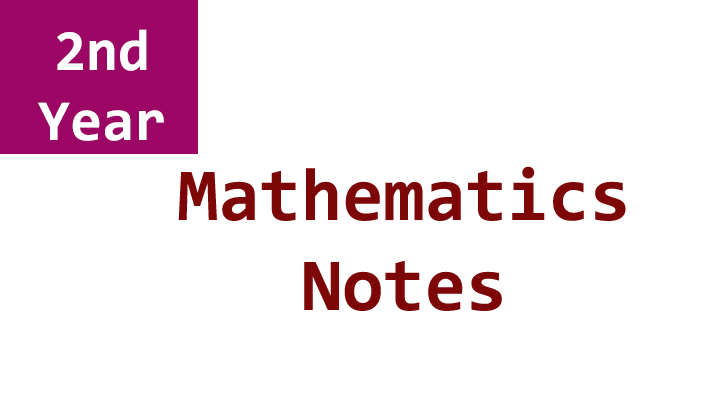This is the domain of sophisticated mathematical ideas. In your 2nd year of mathematics, you are going to get deeper into the concepts of limits, differentiation, integration, analytic geometry, linear inequalities, linear programming, conic sections, and vectors. It will be an exciting adventure. This notes collection’s chapters are all thoughtfully chosen to offer you a thorough grasp of these foundational mathematical concepts.
Chapter 1: Functions and Limits
This introductory chapter will walk you through the basic ideas of limits and functions. Functions explain the relationship between inputs and outputs and are frequently regarded as the fundamental units of mathematics. Contrarily, limits establish the idea of reaching a certain value and lay the groundwork for the more complex ideas that will come.
Chapter 2: Differentiation
After learning about functions and limits, you move on to the topic of differentiation. This chapter explains the methods and ideas involved in determining derivatives so that you may examine how quickly things change. Differentiation is an essential tool for comprehending the behavior of mathematical functions, from fundamental principles to more intricate applications.
Chapter 3: Integration
Introducing the idea of anti-derivatives, the integration chapter expands on the knowledge covered in differentiation. You will investigate methods for calculating the area under curves, work through issues involving the accumulation of numbers, and comprehend the fundamental relationship between integration and differentiation.
Chapter 4: Introduction to Analytic Geometry
Analytic geometry is a potent tool for visualizing mathematical ideas because it combines geometry and algebra. This chapter looks at geometric representations of algebraic equations and presents the Cartesian coordinate system. You will study two-dimensional function and equation graphing, which will prepare you for more complex geometric ideas..
Chapter 5: Linear Inequalities and Linear Programming
Real-world scenario modeling heavily relies on linear inequalities. This chapter presents the idea of linear programming, which is the application of mathematical methods to the optimization of goals under a system of linear constraints. You’ll discover how to conceive and resolve issues that come up in a variety of disciplines, such as engineering and economics.
Chapter 6: Conic Section
The interesting forms created when a cone and a plane intersect are known as conic sections. This chapter examines the features of parabolas, hyperbolas, ellipses, and circles, offering an understanding of their mathematical properties and uses.
Chapter 7: Vectors
The important idea of vectors is introduced in the last chapter. You will discover the relevance of vectors in geometry and physics, as well as how to express and work with them. This foundational knowledge of vectors lays the groundwork for later research on more complex mathematical subjects.

